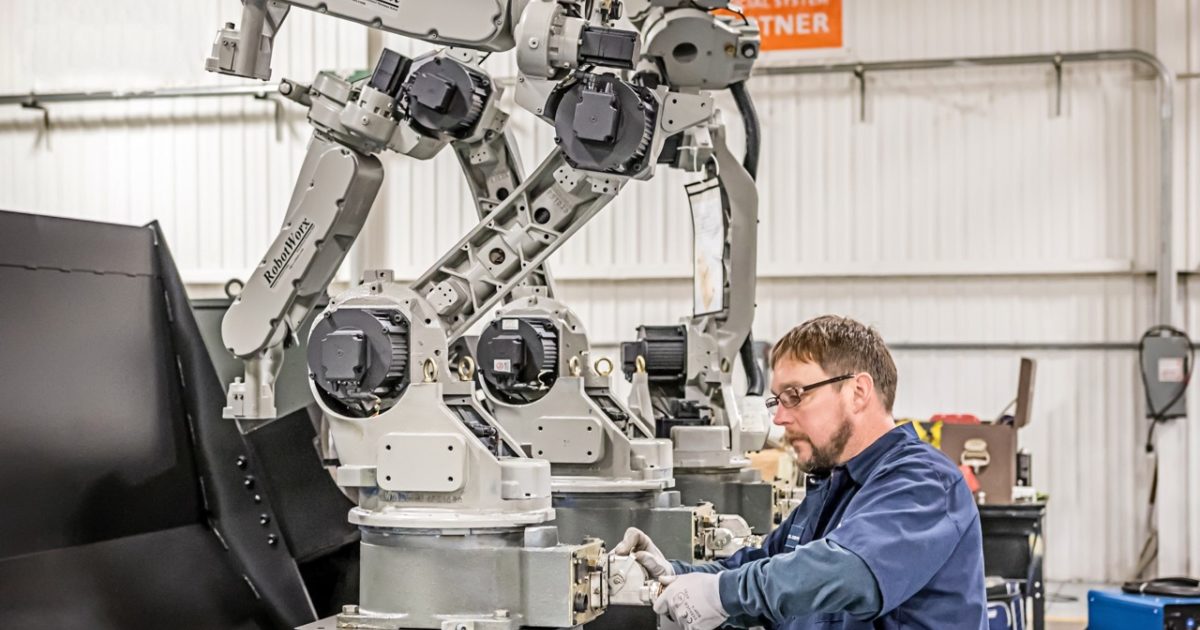The fact that robots increase productivity, reduce incidences of injuries in the workplace, and allow companies the flexibility to easily take advantage of emerging opportunities, makes them a worthwhile investment. Unfortunately, for a long time, this is an investment that only companies with sizable budgets could afford.
However, with collaborative robots becoming even more affordable, these are benefits that most small and medium-sized businesses can now enjoy. As a result, they are currently able to enter, compete, and thrive even in competitive industries that were once the reserve of larger companies.
While the benefits of investing in robots are obvious, there are times when owners sometimes fail to see the benefit of spending money on maintenance routines. If you are thinking of cutting back on preventative repairs and other maintenance routines for your robot, you shouldn’t. The following are the reasons why these maintenance repairs and routines are not only necessary, but also beneficial.
Downtime avoidance
Preventative maintenance routines help to identify potential problems before they get worse. Whether it is a loose screw or lack of lubrication, solving such problems before they get out of hand can help to avoid the need for extensive repairs. And since major repairs typically require more time, this is something that will reduce the odds of extended downtimes.
For a small business, extensive downtime is costly. This is because even when production stops, the company has to shoulder the fixed costs. There is also the cost of late deliveries, frustrated customers, and idle time. These are costs that taking preventative measures can help you to avoid.
Reduced output errors and mistakes
Common maintenance routines help to ensure that a robot is accurate and precise. It usually involves testing and recalibration routines aimed at detecting slight deviations that can lead to poor quality output. And since loose parts, poor wiring, and malfunctioning sensors on a robot arm can end up compromising the quality of products that you are producing, taking the steps to ensure that the robotic system is at its best in terms of precision and accuracy will reduce losses due to defective products. It will also ensure that you do not lose your existing customer base and as a result, is a way of protecting your company’s existing revenue stream.
Improved lifespan
Maintenance tasks like regular lubrication, replacement of worn- out parts, tightening of the screws of the robot arm, and cleaning filters and vents typically prolong the lifespan of a robot. This is because when preventative repairs are done early on, the damage that the defective part have on the rest of the system is limited. These repairs ensure that the system keeps running efficiently, and in the end, slow down the rate at which it depreciates.
If you are an owner, getting more service years out of your robot is beneficial simply because you won’t have to worry about investing in a premature replacement. It is something that also justifies the initial cost of capital that was used in acquiring the robot.
Fewer work-related injuries
Poorly maintained robotic systems are unpredictable in terms of their movements. If their sensors malfunction, or if their limbs get out of position, they can cause accidents. They can injure employees directly due to accidental physical contact. And if they are handling tasks that are inherently dangerous, they can cause accidents that can put the life of your employees in danger.
Proper maintenance helps to reduce the risks of robot-related injuries that happen due to the robot malfunctioning. Therefore, it helps make the workplace safer for human workers. It reduces the costs associated with downtime as a result of injured employees needing to seek medical treatment. And since workplace-related injuries typically lead to litigation and large payouts, making sure that your robots are properly maintained will save you from having to shoulder injury-related costs.
Given the above reasons, it is easy to see why every cent spent on preventative repairs is worth it. While they may require you to pause or delay production activities for a few minutes in a day, they eventually end up saving a company a lot in terms of time and money.
